Weekly review: 28th February – 6th March 2012
Welcome to the first RBA weekly rarity round-up. We hope you like the style and the content. We always welcome submissions of current images for our galley which we can use within the round-up, simply upload them in the normal way to the RBA website and leave the rest to us! You can share the review on Twiiter using the link at the bottom and we will soon be adding Facebook and other social network links.
The final days of February certainly hinted at what was to come for the start of the first week of March as a return to very mild, almost unseasonably so, weather saw some pretty impressive numbers recorded, upwards of 19 degrees C., registered in some southern counties, but the end of the review period saw a return to rather more familiar conditions with a northwesterly airflow coming as a reminder that winter wasn’t ready to drift away just yet. The grey skies and rain, particularly over eastern counties couldn’t dampen the fact that the milder conditions had brought a distinct hint of some new early spring movers and shakers, but the headline makers were, generally, all remnants of what has been one of the most remarkable winter periods many birders can remember.
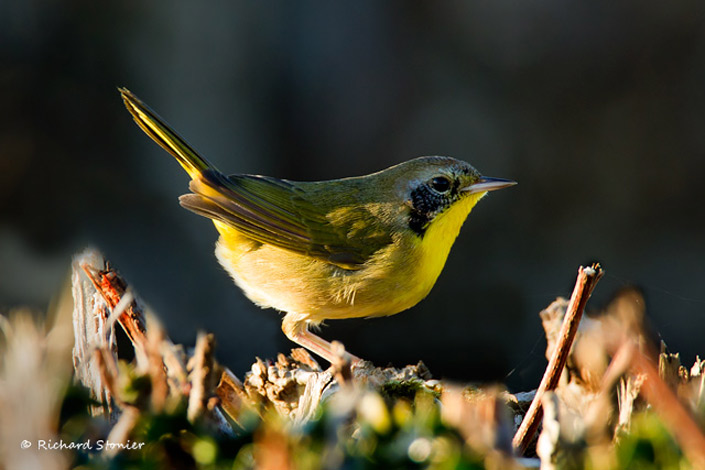
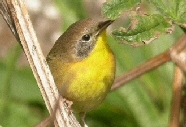
BOU/IRBC Status: A
RBA status: Extremely rare
Accepted British records: 9
Accepted Irish records: 1
Most recent accepted record:
23 Oct 2006 - Penryn, Cornwall
Prime month to occur: October
A blizzard of outstanding rarities has peppered the UK and Ireland since the seasons changed in November and, in what has already been a truly exceptional second winter period, the most recent star turn continued to draw an appreciative audience throughout much of the week as the first Common Yellowthroat for nearly six years (and the first live one in nearly eight years) continued to steal the show, following its discovery at Rhiwderin, near Newport some two weeks or so ago. Another weekend of welcoming all comers was well received and the bird remained until 5th at least.
This particular gleaming first-winter male has certainly brought a burst of late-winter, sulphur-hued sunshine to the Welsh countryside and he’s given a new generation of listers the chances to enjoy what is the second record of this transatlantic traveler within the Principality (the only other record for Wales was a one-day first-winter female on Bardsey in September 1996) and the first live bird anywhere since 2004.
Britain’s first Yellowthroat was discovered off the coast of Devon, on Lundy, in November 1954. A long three decades followed until the second coming, a dazzling male amongst the milk crates on Fetlar (Shetland) for five early June days in 1984. Remarkably, Britain’s third followed just a handful of months later, another super male bounding around the assorted hedgerows and bracken-clad hillsides on Bryher (Isles of Scilly) for a fortnight in October.
Shetland now boasts three records to Scilly’s two, and Ireland has recorded just one (at Loop Head for two days in October 2003). Mainland birds retain genuine “mega” status ~ Cornwall’s sole record (and the most recent record of the species until now) was of a freshly dead young male at Penryn in October 2006. And then, of course, there was the (in)famous bird in Kent….
Prior to the Rhiwderin individual, Britain’s only other wintering Common Yellowthroat was a first-winter male that lodged itself in the Garden of England, at a “private site” near Sittingbourne for the first four months of 1989. Almost inevitably, “private” didn’t actually mean “private” to everyone, and a fair few invitees enjoyed the bird until late April. The presence of the extraordinary Golden-winged Warbler in Maidstone at the same time wouldn’t have helped sway those in receipt of the news to release it further ~ the crowds in the Tesco car park were, on occasion, overwhelming (more than Gillingham FC could draw on a Saturday for sure), so many hundreds of the visiting listers left Kent knowing nothing about would could have been an incredible winter double header. That little suppressive act was one of the most talked about of the 80’s, though it was hardly on a par with the notorious Tengmalm’s Owl at Spurn ~ 29 years ago to the week (it arrived on 6th March 1983) and, even now, a look at Phillip Harrison’s shots are still enough to give any active twitcher at the time significant chills and the coldest of sweats…..
Still. Back to colourful New World warblers. Can you imagine the crowd now should one of those vivacious Vermivoras present itself to the nouveau-twitchers now…..maybe there are some advantages to being older after all!
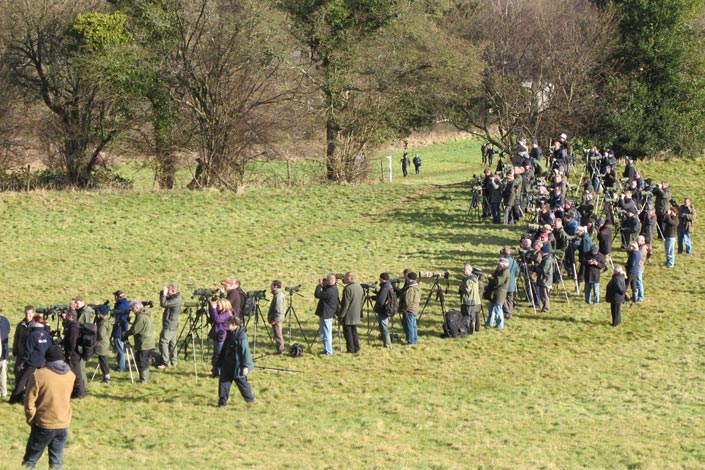
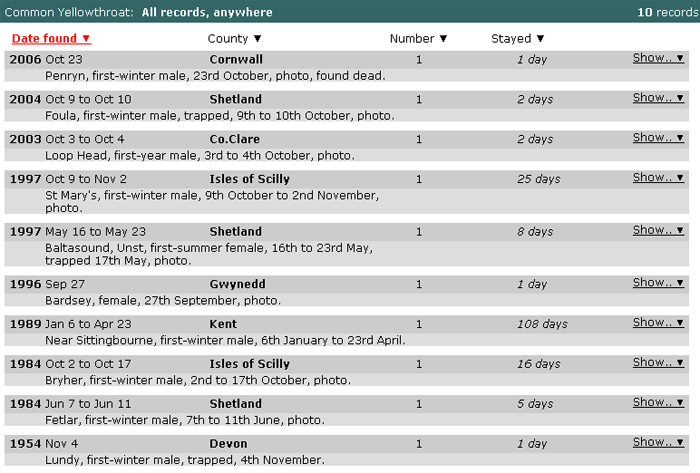
Distribution of Paddyfield Warbler records
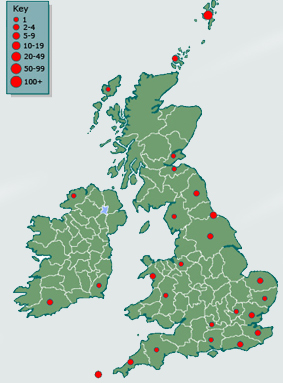
Up in Scotland, a (the?) Greater Yellowlegs put in a brief flyover appearance at Loch of Strathbeg RSPB reserve in Aberdeenshire on the morning of March 3rd ~ the temptation to surmise that it is the same Greater Yellowlegs that spent Hogmanay in the Highlands is strong, though after its departure in mid-January it was only seen once, still in Highland, during the third week of February.
Down in Hampshire, the (presumed) ship-assisted double act of male Dark-eyed Junco and male Spanish Sparrow remained in the New Forest at the Hawkhill Inclosure, and in the gardens at Calshott respectively, both to 6th, with both birds continuing to be popular visitor attractions.
Along the south coast in West Sussex, the wintering Paddyfield Warbler was also still high on the list of many people’s “must-see” birds, remaining around the brambles and bushes by the North Wall at Pagham Harbour throughout the week, to 6th (when he began to sing). Many birders managed an impressive hat-trick, if luck was with them, the Junco and the Warbler often the trickiest two of the trio to collect in the same day.
The Pagham Paddyfield is the first to be recorded in January, February and March, indeed the only blank month on the calendar for the species now is April. The vast majority of British records (82 have been accepted up until the end of 2010) have occurred in September and October, but there are two May birds, one in July (with another awaiting acceptance), two in August (one other outstanding), three for November and one in December (that was in Ireland, where there are four accepted records at present). June is proving to be a good month to find the species nowadays ~ six birds seen between 2000 – 2010, with five of those on Shetland.
In Cornwall, the female Bufflehead was still enjoying her winter sojourn at Helston’s Loe Pool, before a little trip NNW on 5th, dropping in near Redruth as she clocked up another week in Kernow. Perhaps that initial short hop was the warm-up for a long-haul north bound flight in the next few days ~ where will she pitch up next?
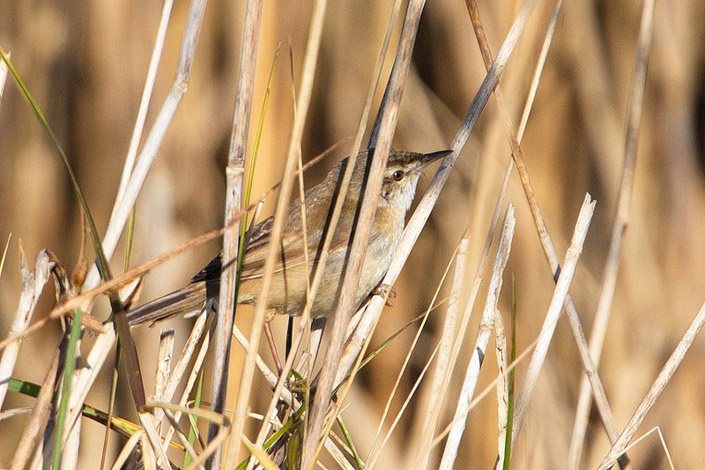
While the Cornish Bufflehead has been met with thumbs-up approval all round (justifiably so, given its credentials) the female Hooded Merganser has been a rather tougher duck to feel inspired by. Initially the Whetsted bird flew under most people’s radar when it appeared (during a cold snap) on February 10th. Searches the following day were fruitless but its rediscovery on 26th set many insurance listers wheels in motion and, although absent on March 1st, the bird was otherwise ever present to 6th.
This species always generates a significant degree of online noise and the endless merry-go-round of “pro’s” and “anti’s” will argue themselves in to any number of blind alleyways. The decision as to the bird’s provenance falls, of course, solely to the BBRC.
They decided that the “redhead” on North Uist, for a late October week in 2000, was the first to be deemed fully acceptable, and they have subsequently allowed four more to wheedle themselves on to the official role call of rarity honours ~ further immatures/females in Northumberland (in 2002), Kent (in 2005) and Fife (in 2008) getting the thumbs up, along with the magnificent male on Unst in April and May 2006 (which really did look like the real deal from online images).
What though makes the five accepted birds any different to other unringed, in-the-wild Hooded Mergansers prior to the new millennium? Arguably, nothing at all. Previous birds, such as the now-you-see-it, now-you-don’t female-type at Titchwell and Holme in January and February 1997, seems to have suffered only by virtue of being pre-2000 and would surely stand up, comfortably, against at least three of the five accepted birds. That’s committees for you I guess….
That said, nearly everyone would be in agreement about the adult drake at Radipole Lake (Dorset). Three months shy of his four year anniversary (appearing on June 6th 2008) this gaudy chap is now reduced to being something of a figure of fun (on a grander scale than even Scarborough’s crisp-munching male from the days of yore).
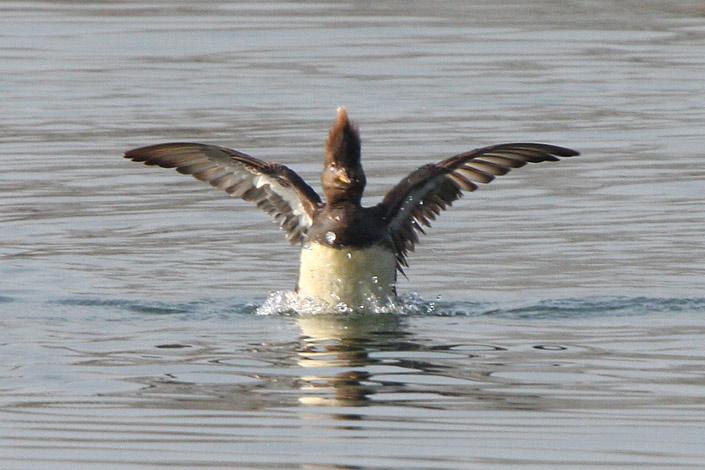
Back to reality with news of a magnificent immature Black-browed Albatross seen, and photographed, from on board the R.V Celtic Explorer, some 160 nautical miles southwest of Mizen Head on 29th February. What a sight that must have been and it stands as a telling reminder of just what is lurking over the horizons in these late, late winter days.
Less likely to cause such a stir are the two single Little Auks were seen around Orkney this week and the single Pomarine Skuas were seen off the coasts of Essex and Suffolk on 4th.
Despite the mainly near-balmy scores-on-the-temperature doors, it was still “late winter” and that meant that there was little in the way of change in terms of our wintering herons, egrets and allies, although some newbies did surface.
In Norfolk, at least four Glossy Ibis were still to be found around the expansive marshes in the far east of the county throughout the week. Two were at Radipole Lake on 29th and again on 4th-6th, while a lone bird made a brief appearance at Broom GPs, in Bedfordshire, on 6th. Leftover English singles remained in Lancashire, Suffolk and Somerset, three more lingered at Marloes Mere, in Pembrokeshire and two were still way out of range on Eigg, off the Scottish coast on February 29th.
A Cattle Egret spent an afternoon in fields near Brading on the Isle of Wight on 5th (the third, or possibly fourth, on the island since 2009). A little further to the east, Kent lead the way with Great White Egrets this week ~ at least five birds present in the county on 3rd, two on the Little Stour and three at Dungeness RSPB, with two singles elsewhere in the county during the week. A further eight were recorded across English counties (from Somerset to Cumbria on the western side of the country across to Norfolk and Essex on the east side). Two were noted in Wales (in Powys and Carmarthenshire).
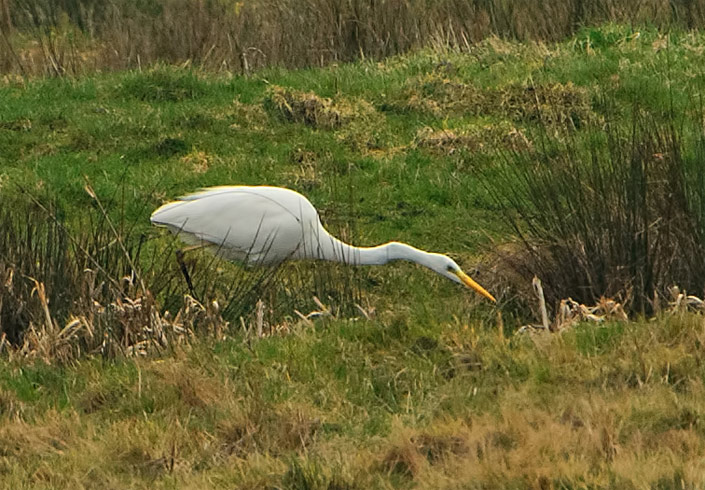
Spoonbill numbers fell away a little this week, with 16 birds reported (though there was no news from Poole Harbour). Regular wintering birds in north Devon totaled seven and four adults were new arrivals on the Somerset Levels on 29th. Two singles were seen in Ireland, in Waterford and Wexford.
Six Common Cranes remained on the Cambridgeshire Washes until 3rd at least, with two birds in Kent and two in Wexford, while a singleton was still in North Yorkshire on 29th.
Last but not least, Lincolnshire’s White Stork which completed another week of rummaging around in the grot and garbage of the landfill site at Kirkby-on-Bain, still present on March 3rd. What a choice it must have been ~ a soon-to-be-made long haul flight across Africa back to Europe or a spot of rubbish-rootling on a tip in eastern England….the origins of this bird remain unknown.

As well as the occasional White Stork, the “OUO” brush is also no stranger to some of the wildfowl that appears here year in, year out. One of the species that is most frequently tarred and tainted by a sweep or two of the “of unknown origin” bristles is Ross’s Goose ~ two of which were seen this week.
The first bird, a roaming loner, remained at large in Norfolk, alongside Pink-footed Geese, but only until 29th. As usual, as the Pinks leave the county, the Ross’s Geese go with them and there’s every chance that one will be picked up with migrating flocks (as was the case last week in Northumberland, a Ross’s Goose with Pink-footed Geese was seen at East Chevington on 25th and 26th).
In Dumfries & Galloway, a Ross’s Goose was still around the edges of the Solway Firth, at Mersehead RSPB on 6th ~ this one with a different carrier species, Barnacle Geese.
Changing back to migrating flock of Pinks briefly. As has happened in Pink-foot hotspots in the past, one group this week appeared to have drawn a Snow Goose in to their midst in Fife, one seen heading northwest over Kilrenny (famous for its Masked Shrike of course) on March 1st. A look at the map throws up the inevitable head scratching thought about the closeness of Northumberland and Fife and the timings of the sightings of two white and black geese…
A single Snow Goose was in Co. Tyrone, at Myroe Levels during the week and a flock of 31 (28 white, 3 blue) were seen at Scotney GPs on the East Sussex/Kent border from 3rd to 6th, having flown over Southampton on 2nd. This record mirrors (to the day) a sizeable flock at the same site on the same date in 2009 ~ 24 birds seen then.
One or two Red-breasted Geese were noted in Suffolk during the week (variously reported as an adult and a first-winter) with further singles in Hampshire and Dumfries & Galloway.
Three vagrant Richardson’s Canada Geese lingered in County Sligo to March 1st at least, with a couple of singles still with the Barnacle Geese on Islay. A probable Gray-bellied Brant, a first-winter, was seen at Killough, County Down between 28th-3rd while one or two Black Brants were in Essex, two apparent non-hybrid birds were at Holkham (Norfolk) on 29th and one remained in Wexford.
The week’s eight drake Green-winged Teals were spread far and wide ~ two for Scotland (in Forth and Angus), three for Ireland (in Derry, Wexford and Galway) and three for England (in Northumberland, Cleveland and Essex).
New this week was a drake American Wigeon on the same stretch of Norfolk marshes, at Marlingford, as a Great White Egret ~ although it transpired that the duck wasn’t new at all, having been present for several days before some good-hearted soul spread the news. Further drakes lingered at Bay of Suckquoy on mainland Orkney, Kirk Loch in Dumfries & Galloway, Anglers Country Park in West Yorkshire and on the Exe Estuary in Devon. Over on Scilly, the first-winter drake Blue-winged Teal remained on St. Mary’s to 4th at least.
This week sees us celebrate the Silver Anniversary of Britain’s first ever Lesser Scaup (the famous first-winter drake at Chasewater in March – April 1987) and it is still pretty hard to believe how frequent they have become.
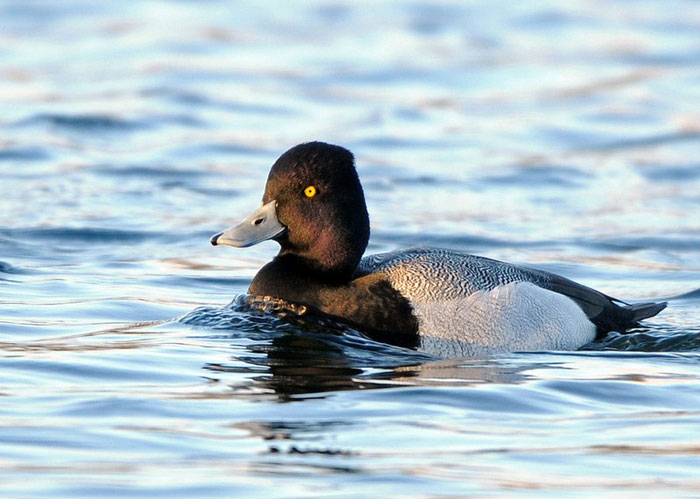
Recorded every year since the Staffordshire bird, there are now (up until the end of 2010) 157 accepted records for Britain with a further 14 accepted birds for Ireland (until the end of 2007). The majority of English counties have staked a claim to at least one Lesser Scaup (Norfolk remaining a notable exception) in the last 25 years and this week, two birds were in place to celebrate an historic milestone.
The returning female was still at Slimbridge WWT on 29th and again on 5th, while the returning drake (back for a fifth winter) remained at Cosmeston Lake in Glamorgan, where his visitor numbers tally has risen sharply of late, as many Yellowthroat listers took in this showy padder.
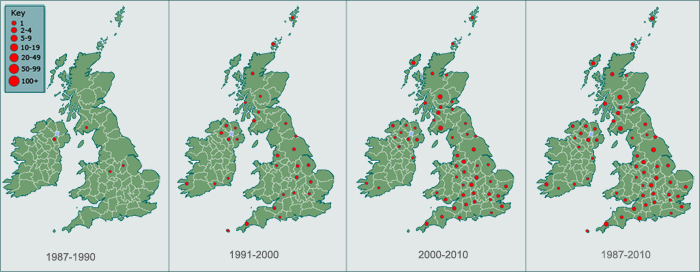
Ring-necked Duck is, of course, rather less unusual than Lesser Scaup and this week saw six recorded, all of them drakes. Cornwall hosted two singles, as did Ayrshire, with one each for Lancashire and Waterford.
In Ireland, a first-winter female King Eider was a terrific find off Annagh Head, out west in Mayo, on 1st and the same date saw a drake appear in Burghead Bay, where one was seen in late October and November. Three drake Surf Scoters were seen off Llanddulas (Conwy) on 4th (with a female still at Morfa Nefyn in Gwynedd to 5th), with a couple of single drakes off the coast of Fife and lone young males still in Cornwall and Cork.
The wintering Pallid Harrier in Galway (now in to its sixth month on site) was seen again this week, still in the vast surrounds of Lough Corrib on 3rd. Up to 17 Rough-legged Buzzards were reported, including three at Holkham Freshmarsh (Norfolk) on 28th, with others in West Sussex and Kent (up to four there), through Lincolnshire to Durham and up on to Shetland (two birds there this week). One was again seen in County Down too, at Chapel Island on 1st.
A Lesser Yellowlegs “found” in southeast Cornwall last week had actually been wintering on site (at Kingsmill Lake), so it wasn’t too much of a surprise that it was still present all week this week. The wintering Pectoral Sandpiper in Ayrshire was back at Dundonald Camp from 3rd (having been seen there last in mid-January) and a second bird was discovered at Loch Gruinart RSPB, Islay on 5th. The Spotted Sandpipers in Dorset (at Christchurch Harbour) and neighbouring Somerset (at Chew Valley Lake) were still present to 5th and 6th respectively.
Three Long-billed Dowitchers (a two and a one) remained in Wexford (two at the Cull and one in Bannow Bay ~ perhaps the latter wass the Kidwelly Marsh bird?) and another was new at Lodmoor RSPB (Dorset) on 5th.
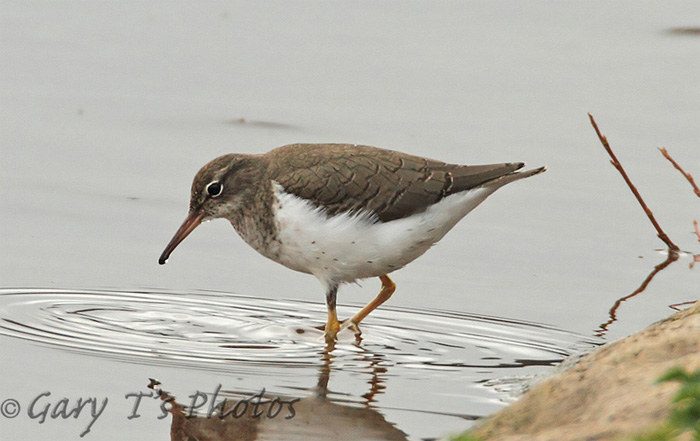
A first-winter Bonaparte’s Gull was a sharp fly-by find off Newbiggin (Northumberland) during the late afternoon of 5th ~ if accepted it will be only the fourth county record (the others coming in 2006, 1998 and 1955). In south Wales, the adult Bonaparte’s Gull in Cardiff was seen again on 3rd-5th March and in Ireland, the adult in Antrim was still at Ballygalley on 3rd.
There were still hundreds of Iceland Gulls on offer this week ~ any number of ones, twos, threes, fours and fives were to be found countrywide ~ mainly (though not always) along the western side of the Britain and Ireland~ and that’s before the double figure tallies are included. In Scotland, 10 birds were at both Fort William and Peterhead over the weekend with a dozen still around Castletown Bearhaven (Co. Cork). A significant jump follows to at least 40 birds around the Shetland Catch factory in Lerwick, 45 at the evergreen Killybegs in Donegal, but leading the way (and then some) was Stornaway, on Lewis in the Outer Hebrides, where a massive haul of 81 birds were counted on 3rd.
With Iceland Gulls, come Kumlien’s Gulls and just under 30 remained into the new month. Ireland scored 13 (including six at Killybegs on 4th) while Scotland (including Shetland) registered 11 (five at Lerwick) and four were noted in England. In Argyll & Bute, a juvenile Thayer’s Gull or hybrid was at Taynuilt on 3rd and was presumably the same bird that has been seen in the county for several months this winter.
Although outnumbered by their rather more demure white-winged cousins, there were still a lot of Glaucous Gulls up for grabs, another week where the century mark was passed. The spread was far and wide, but again it was mainly the west coast that fared best, along with Scottish islands. Killybegs was king though ~ six there on 4th.
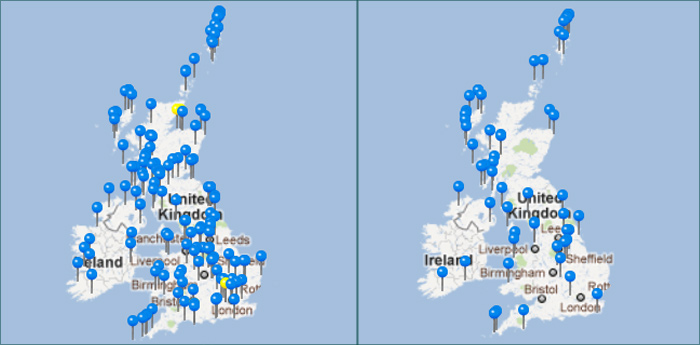
Seven Irish counties shared a dozen Ring-billed Gulls this week, several of them returning adults. Three birds were in County Cork (including a new first-winter) and three of Kerry’s four birds were noted at Blennerville during the week. Elsewhere, there were three for England (including a first-winter on the Hayle Estuary on 6th) and singles in Scotland and Wales.
Waxwings managed to nudge themselves in to three figures (just) with 31 around the university in Sheffield on 29th the largest flock noted this week. In County Down, the wintering Richard’s Pipit was again at Killard Point on 2nd, while a new Rose-coloured Starling, a singing male, was found at Hordle, in Hampshire towards the end of February and was one of three seen during the week ~ the others lingering in Ayrshire and on Anglesey. In West Yorkshire a Black-bellied Dipper was reported at Denso Marston Nature Reserve near Shipley, the same site frequented by one (it) last October. Perhaps it fancied the winter's continental climes in Gods Own County and decided on an extended winter break.
One of the week’s most surprising finds was the female Siberian Stonechat on the South Slob in Wexford. Discovered on the morning of 5th, and still present the following day, this frequently showy bird was only the second record for Ireland in the last 12 years (the only record was at Galley Head in Cork in October 2010).
The sudden paucity of recent records of this newly elevated species is well documented ~ a quick reprise of records over the past decade shows just two years (2004 and 2008) where double figures have been recorded (at least 11 in both), with the last three years seeing three (2009), four (2010) and two (2011) noted. It’s an interesting downward spiral and, despite increasing numbers of field observers, they are still getting rarer.
Five Yellow-browed Warblers remained between Cornwall (three there) and Somerset through the week, with another still in Worthing, West Sussex.
With the warmer temperatures and frequent pulses of spring air in the past few days, it seemed as though a few of our wintering Great Grey Shrikes were beginning to think about making a move ~ at least 28 birds were seen, 17 in England, six in Wales and five in Scotland. Two were together on Thursley Common (Surrey) on 28th, two were around the Dorset downs at Sixpenny Handley in Dorset on 1st and at least two were still in the New Forest.
The long-staying Coues’ Arctic Redpoll continued to show well at Titchwell RSPB until 5th while this week’s round-up draws to a close with news of a Penduline Tit at Dungeness (Kent) on 29th-1st (and presumably the bird seen there a few days beforehand). Remarkably this is the 43rd record of the species for the site! Those records have all come since the first in 1988, with four from November 2009 to January 2010 the maximum number recorded at this famous site.
As the week drew to a close and some slightly colder weather set in again, there were at least some true spring migrants making it through the chilly winds. White Wagtails, Sand Martins and Stone Curlews were all noted, so the next puff of warm weather should open the door a little wider and those first overshoots won’t be too far away…
Mark Golley
6th March 2012




